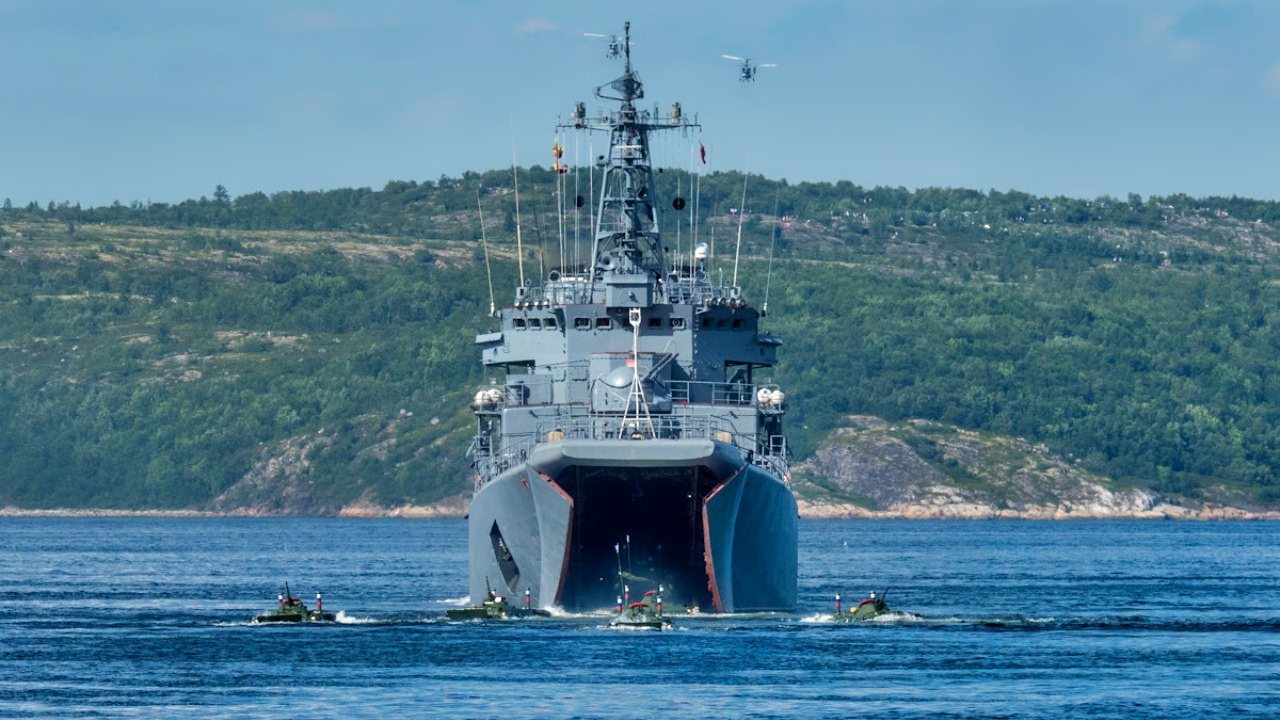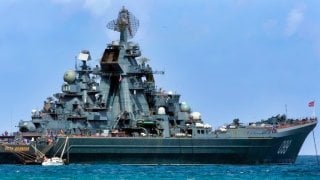Russia's Navy Day Parade Was a Truly Sad Affair
The Paris Summer Olympic Games opened in a dazzling ceremony on the Seine, featuring international athletes and performances despite the rain. Notably absent were Russia and Belarus, banned from the event, with some athletes competing under a neutral flag. In contrast, Russia's Navy Day Parade in St. Petersburg, attended by President Vladimir Putin, was scaled down due to security concerns, featuring just twenty surface ships, four sailing craft, and a submarine.
Summary and Key Points: The Paris Summer Olympic Games opened in a dazzling ceremony on the Seine, featuring international athletes and performances despite the rain. Notably absent were Russia and Belarus, banned from the event, with some athletes competing under a neutral flag. In contrast, Russia's Navy Day Parade in St. Petersburg, attended by President Vladimir Putin, was scaled down due to security concerns, featuring just twenty surface ships, four sailing craft, and a submarine.

-The muted parade highlighted ongoing security issues, as the focus remained on the conflict in Ukraine. This year's event was a stark contrast to last year's more impressive display.
Russia's Navy Day Parade: Day Not Exactly What It Was
On Friday, the eyes of the world were on Paris, France – even a steady rain couldn't damper the energy at the opening ceremonies of the Summer Olympic Games. From the parade of international athletes waving to crowds from boats cruising down the romantic River Seine to dramatic performances harkening back to French history, the spectacle of the City of Lights exudes a certain je ne sais quoi that was truly unforgettable.
As the rain-soaked, smiling Olympians passed by the cameras and flashing lights, some nations seemed to be absent from this treasured international event. Among the nations not present this year were Russia and its close ally Belarus, who were banned from attending. While a handful of Russian and Belarusian athletes have been allowed to compete, they must do so under a neutral flag – and were not allowed to attend the parade on the Seine.
Russia's Navy Day Parade Was a Muted Affair
Russian officials have been silent on the matter and instead opted to focus on its own river parade in St. Petersburg – namely the annual Navy Day Parade, which is held on the last Sunday of July. The event has been greatly scaled back – with this year's main parade canceled, reportedly out of security concerns. Yet, Russian state media still attempted to hype the event to Olympic proportions.
"A naval parade involving cutting-edge combat ships and gunboats, a submarine and sailing vessels began on the Neva River in St. Petersburg to celebrate Russia's Navy Day," TASS reported, further noting that the momentous occasion was attended by Russian President, Supreme Commander-in-Chief Vladimir Putin, who reviewed the procession of warships.
Why So Small?
Was the parade of proud Russian war machines as “Olympic” as state media proclaimed? Surprisingly, this was the smallest such Navy Day event since it was reinstated in 2017, involving just twenty surface ships, gunboats, four sailing craft, and a single submarine. These were small vessels that the Kremlin could afford to recall back to the homeland for ceremony, while the rest of the Baltic Fleet remained moored far from the Neva River.
The flotilla of ships in the parade included the Project 12700 coastal minesweeper Alexander Obukhov, as well as the Project 21631 missile corvettes Grad, Naro-Fominsk, Grad Sviyazhsk, and Serpukhov. The Project 22800 Karakurt-class missile corvette Odintsovo, the Project 20380 missile corvette Boiky, the Project 23550 icebreaking patrol ship Ivan Papanin and the Project 636.3 Varshavyanka-class large diesel-electric submarine Mozhaisk also made an appearance.

This was a stark contrast to last year, when a more impressive display of forty-five ships of all sizes, plus nuclear-powered submarines and some 3,000 military personnel, took part in the parade. This year's event also included a few notable choices, highlighting the evident ongoing security concerns.
"A group of anti-saboteur boats opened the Main Naval Parade on the Neva River. The anti-saboteur boats Nakhimovets and Yunarmeyets Tatarstana sailed along the Neva River. The Project 11770 amphibious assault craft Alexey Barinov traditionally carried a replica of Tsar Peter the Great's botik (boat)," TASS further reported.
Approximately 2,500 Russian naval infantry troops marched at the foot columns at Senate Square in St. Petersburg at the conclusion of the parade, continuing the theme of diminished assets that the military can display, as their focus is still centered on the conflict in Ukraine.
Only a handful of foreign vessels were present this year, a far less stimulating on the Neva River than what went down on the Seine. It included the Algerian Navy training ship Soummam, the Chinese People's Liberation Army Navy (PLAN) guided missile destroyer Jiaozuo, and the Indian Navy's frigate Tabar. The presence of the latter two vessels was noteworthy for the fact – that apart from being from two nations that are currently in an arms race with one another – each was larger than Russia's own warships in the parade.
Author Experience and Expertise: Peter Suciu
Peter Suciu is a Michigan-based writer. He has contributed to more than four dozen magazines, newspapers, and websites with over 3,200 published pieces over a twenty-year career in journalism. He regularly writes about military hardware, firearms history, cybersecurity, politics, and international affairs. Peter is also a Contributing Writer for Forbes and Clearance Jobs. You can follow him on Twitter: @PeterSuciu. You can email the author: [email protected].
Image Credit: Creative Commons and/or Shutterstock.


